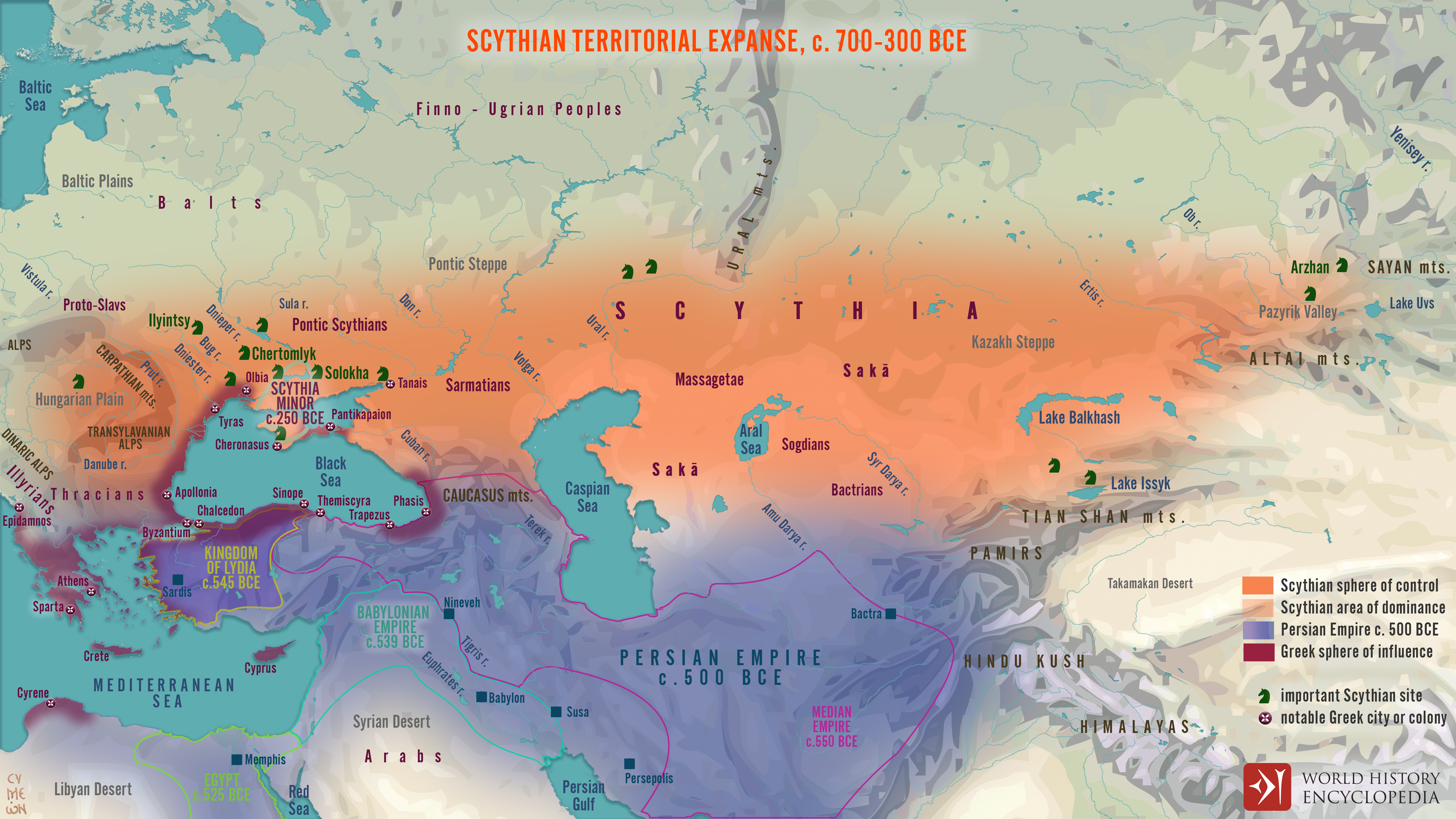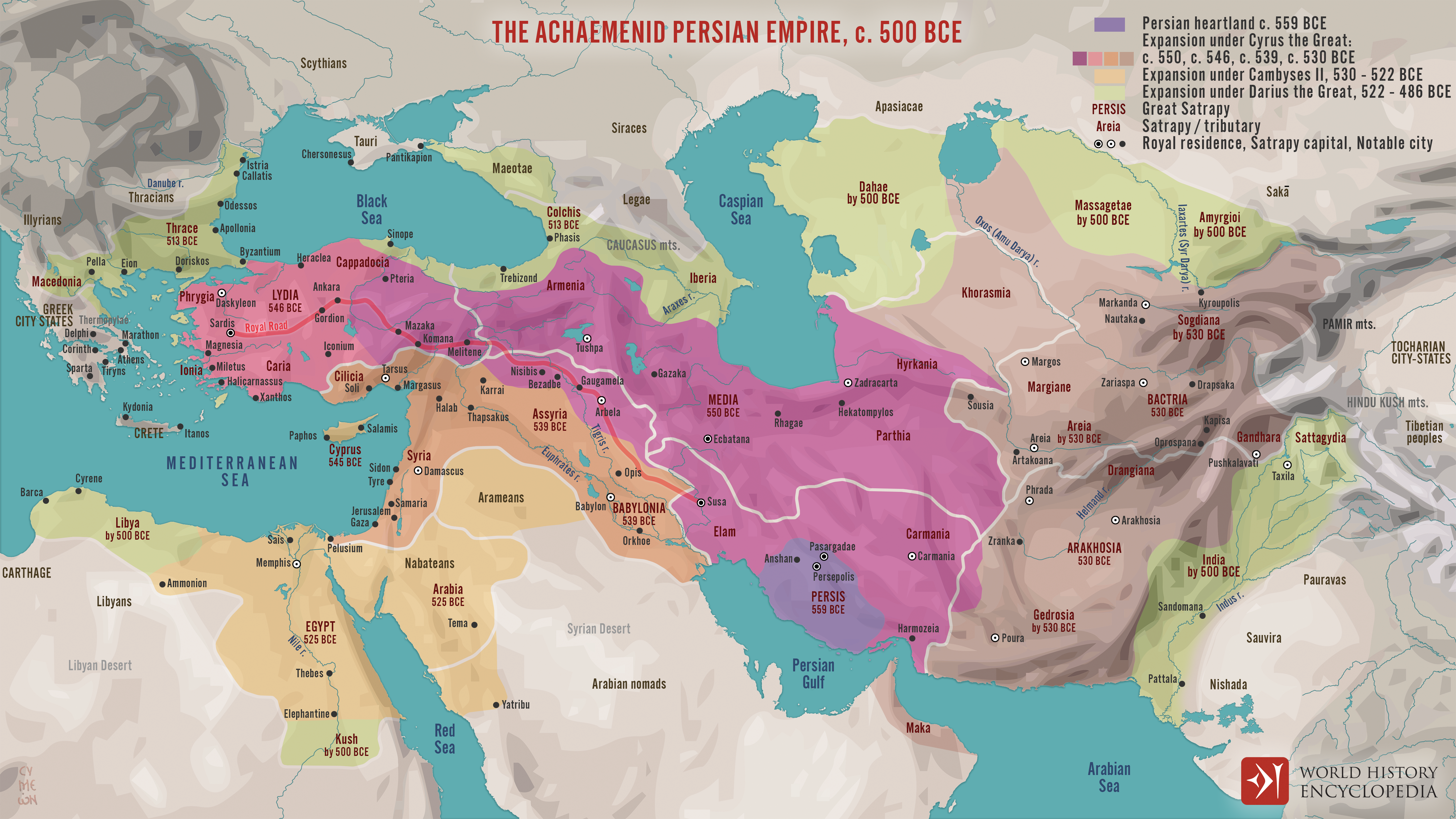General Overview
Who Were the Scythians?
A group of similar cultures found across the Eurasian steppe (from present-day Hungary in the west to present-day Mongolia/Siberia in the east) from roughly the 8th c. BCE to the 3rd c. CE, notable for, among other qualities:
- nomadic or semi-nomadic lifestyle
- wearing of trousers
- archery, especially on horseback
- some evidence of women in stereotypically masculine roles and buried with weapons
- “animal style” art/aesthetic
- burials in kurgans, underground tomb chambers with large man-made hills above
The names we have for these peoples (Scythian, Saka, Sai, the somewhat-related Skudrians) come from other civilizations, like Greece and Persia, so we don’t really know what they called themselves.
The “skud/skyth” sound common in these names has been said by some scholars to have its root in a Scythian language meaning “arrow”–i.e., they referred to themselves (as a group/culture) as archers.
These peoples didn’t really have a written language, so surviving information comes from a few written sources (see Resources) and material goods found overwhelmingly if not exclusively in kurgans.
Ancient sources do mention assorted tribe/group names, but these might also be the labels given to them by Greeks or Persians, so we can’t necessarily assume they’re endonyms, either.

